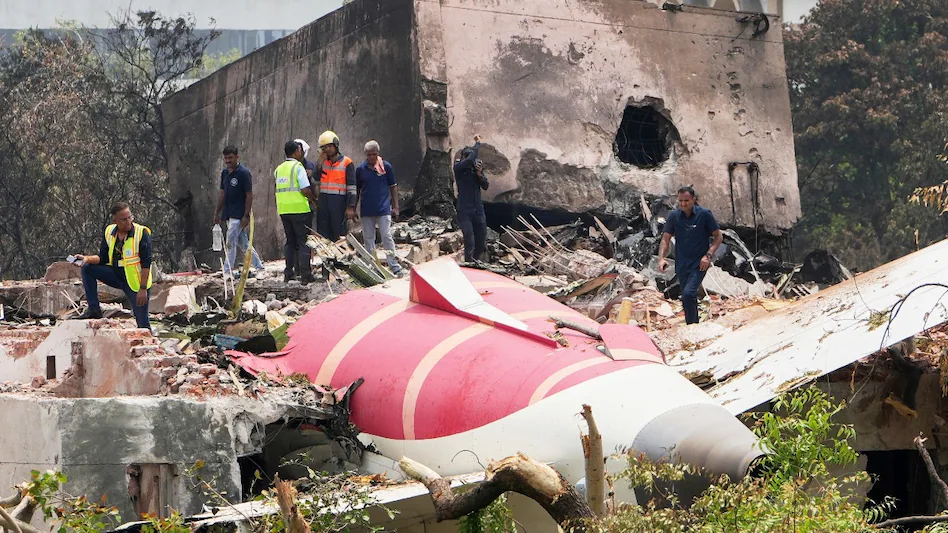Aviation Safety Review has taken center stage in India’s Parliament following the June 12 AI‑171 crash in Ahmedabad. Two committees—the Parliamentary Standing Committee on Transport, Tourism & Culture and the Public Accounts Committee (PAC)—are convening on July 9 to evaluate the current Aviation Safety Review in light of the nation’s worst aviation disaster in a decade. With multiple agencies involved, here’s an in‑depth blog‑style breakdown of this crucial probe.
Aviation Safety Review Initiative Takes Form
In the wake of the Aviation Safety Review directive, Parliament is mobilizing top officials and stakeholders to discuss industry vulnerabilities. Led by JD(U) MP Sanjay Jha, the Standing Committee will hear from the Civil Aviation Secretary and DGCA, focusing on systemic safety lapses following the AI‑171 crash—a Boeing 787 that plummeted seconds after takeoff, killing 260 people.
Meanwhile, the PAC, chaired by K.C. Venugopal, will examine airport infrastructure, tariffs, levy protocols, and emergency response effectiveness with input from DGCA, AAI, AERA, BCAS, airlines, and airport operators.
Crash Context – AI‑171 Sparks Urgent Aviation Safety Review
On June 12, AI‑171, departing Ahmedabad for London, crashed into the BJ Medical College hostel within a minute, claiming 241 onboard and 19 on ground. The AAIB, supported by the NTSB, retrieved black boxes by June 25 and submitted preliminary findings ahead of full analysis. This crash—India’s deadliest since 2010—underpins the rationale for the Aviation Safety Review.
Focus Areas of the Aviation Safety Review
Key agenda items include:
- Black box data timeline and findings
MPs pressed for details on CVR/FDR analysis and foreign cooperation. - Regulatory compliance and DGCA oversight
Red flags raised over pilot duty limit breaches and overdue escape slide checks. - Infrastructure readiness
Smaller airports need upgrades for navigation, lighting, and emergency response. - Airline safety records
Airlines including Air India, IndiGo, SpiceJet, Akasa Air, and private airport managers (Adani, GMR) face scrutiny.
Panels Demand Accountability in Aviation Safety Review
MP R.K. Chaudhary emphasized that raising tough questions ensures vigilance among airlines. MPs are expected to question Boeing officials and the Aviation Secretary about policy lapses, as confirmed in committee summons. Requests for special audits by BCAS and potential inclusion of foreign experts in probe teams signal seriousness in the Aviation Safety Review.
Broader Aviation Safety Review Measures Now Underway
Even before the Aviation Safety Review panels meet, the government formed a Home Secretary–led expert committee to overhaul aviation safety policy. DGCA is auditing airlines and airports, increasing inspections and issuing warnings to Air India for violations.
Black Box Reports Fuel Aviation Safety Review Urgency
Air India submitted its preliminary crash report—including black box, communications, and maintenance logs—to the MoCA. This document will inform the Aviation Safety Review, which aims to ensure adherence to global safety standards mandated by ICAO.
Public Assurance Through Aviation Safety Review Transparency
With India emerging as a leading global aviation market (400 million+ fliers annually), maintaining public confidence depends on the outcomes of this Aviation Safety Review. Demonstrating accountability—from pilot rest rules to runway infrastructure—will be essential for continued growth.
What to Expect Post–Aviation Safety Review
- Committee reports with safety recommendations.
- Policy reforms, including duty time limits, maintenance checks, and black box data protocols.
- Regulatory upgrades in airport infrastructure and emergency preparedness.
- Enforcement actions—fines, audits, and possible prosecutions.
- Industry collaboration—DGCA, airlines, and manufacturers like Boeing to align procedures.
These steps aim to prevent a repeat of tragedies like AI‑171 and reinforce India’s commitment to passenger safety.

Conclusion: Aviation Safety Review Defines India’s Flight Standard
The Aviation Safety Review in Parliament marks a pivotal juncture in India’s aviation history. With high-level participation from regulators, airlines, airports, and manufacturers, this collective audit aims to overhaul systemic issues exposed by the AI‑171 crash. If effectively implemented, the Aviation Safety Review will restore confidence in India’s skies and set a higher benchmark in global aviation safety.
Vijay Deverakonda Embraces Arjun Reddy Legacy Like DiCaprio Did Titanic

